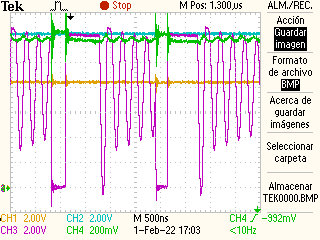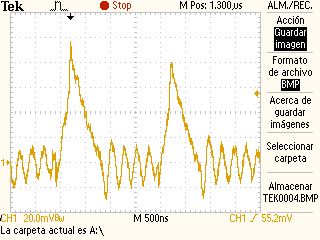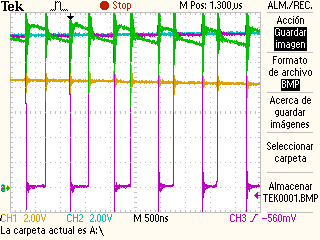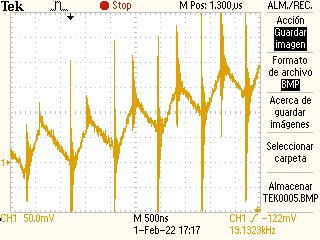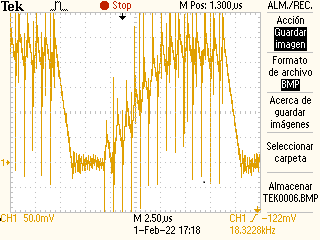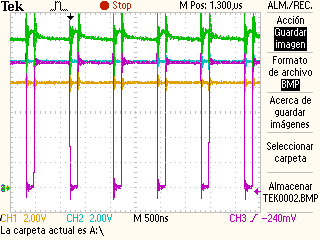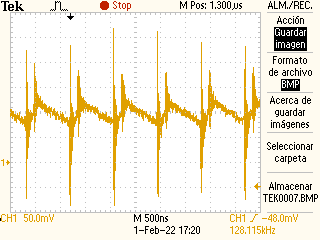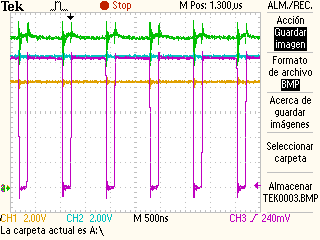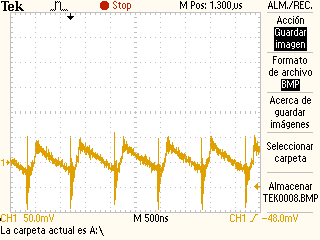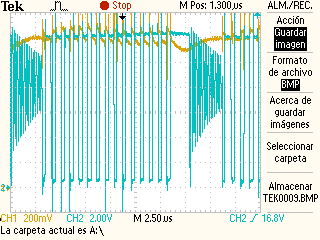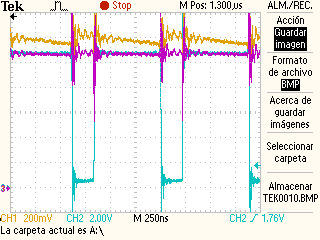Other Parts Discussed in Thread: TPS61288,
We have a design with this part that does not work. We have this design in 2 different PCBs. It is a 8,4V input and 12V 2A output. The behavior is completely different and nothing seems to make sense. Here is the schematic.
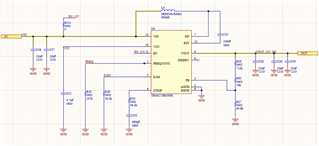
PCB NUMBER 1:
On our first prototype for the design number one the part worked properly (excepting a small issue that when the load was high enough for the part to enter PWM mode it did not return to PFM mode as the load lowered, even with no load at all, we needed to switch off the input and restart it to return to PFM). We have found problems with the second prototype of this first PCB. The part only works properly for loads below 0.4A. With higher loads the output falls to aprox. 10V. The FB signal also falls according to the output voltage The main abnormal behavior I can see is that the COMP signal also falls from more or less 1,5V to 1,2V. According to the block diagram of the datasheet COMP should increase as FB gets away from the 1.2 reference. When this happens, all the signals remain at that levels even if I lower the load, including disconnecting it.
My questions for this PCB:
- Why is the COMP signal falling down together with FB signal. Usually the behavior is the opposite.
- Why does the part get stuck in PWM mode even with no load?
- When the part gets stuck in PWM mode the signal at the SW pin is the same even with no load, but the current consumption from the input is consistent with the load applied at all times. At the SW pin we can see that the frequency of the signal is the proper one (according to Rt, 1,1MHz) and that the duty cycle is 20% aprox. Why is this signal not generating current on the coil and therefore not in the input? It is supposed that with that signal the current on the coil should raise and then be transferred to the output capacitors, but there is no current consumption at all excepting the switching losses.
- Why is this happening and how can we solve it?
PCB NUMBER 2:
We mounted 2 different prototypes and both of them have the same behavior. We can only achieve the required output voltage if we start the converter with no load and then slighly raise the load, but we are not able to reach the 2A output. Before that all the signals that were more or less stable started to show strange waveforms. We can see ramps on FB signal, as if there was a capacitor connected there. The COMP signal falls to 0 and performs a strange recovery waveform. The SW signal shows that both FETs are off sometimes. I am attaching a couple of waveforms, one when working properly and another one when it does not work.
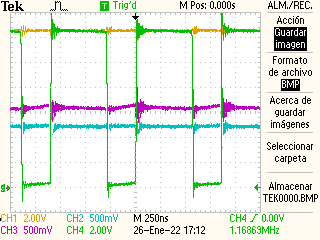
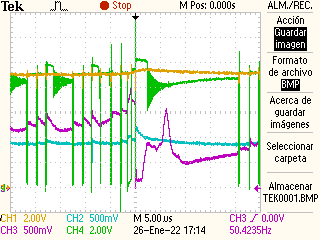
Yellow is output voltage
Green is SW pin
Blue is FB pin
Purple is COMP pin
My questions for this PCB:
- Why can we see capacitor slopes on FB when output voltage is stable? It is supposed that FB is just a small copy of output. Is there any internal capacitor at FB pin?
- Why that weird signal on COMP? It looks like it is not following the inverted version of FB. According to the datasheet the signal on COMP is clamped for not going too low. Why is it falling to ground?
- Is it normal that both FETs are switched off at the same time?
- Why is this happening and how can we solve it.
Regards.


